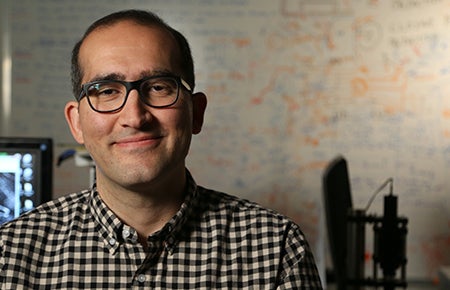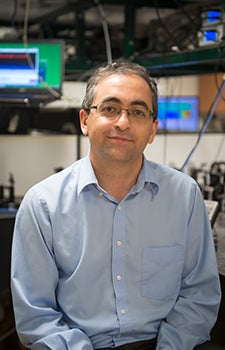
Cross-disciplinary research targets technological advances
Three USC Dornsife faculty members are among a select group of scholars whose cutting-edge research projects recently received Multidisciplinary University Research Initiative (MURI) grants from the Department of Defense.
MURI grants, which support research aimed at technological advances bridging multiple scientific disciplines, are difficult to get and coveted by scholars because they last up to five years, compared to typical two- to three-year, single-investigator university research grants.
The USC Dornsife scholars are involved in three separate research projects that are among 24 awarded a total of $169 million in April by the Department of Defense. These two-dozen recipients were selected from 436 applicants, the DOD said in a news release.
“It’s a really great sign that so many of our researchers were successful in their MURI applications,” said recipient Stephen Bradforth, professor of chemistry and divisional dean for natural sciences and mathematics at USC Dornsife. “These research projects represent innovative, out-of-the-box type thinking.”
Past MURI grants have yielded such advances as the integration of computer algorithms with sensors to help counter vision impairment and the use of self-assembling materials to create microscopic — nanoscale and microscale — structures, the DOD said.
The following are brief descriptions of the projects involving USC Dornsife scientists:
Best of both worlds
Moh El-Naggar, associate professor of physics, biological sciences and chemistry, is the principal investigator of a research project called “Livtronics: Living Electronics for Biologically-Enhanced Sensing, Computing, and Signal Transmission.”

Moh El-Naggar. Photo by Matt Meindl.
Said El-Naggar: “What we’re trying to develop is a new class of devices that we refer to as ‘living electronics.’”
The end game, he said, is creating a hybrid of biological and synthetic electronics.
“Biology is very robust and self-healing,” explained El-Naggar, who holds the Robert D. Beyer (’81) Early Career Chair in Natural Sciences. For instance, cells can reproduce themselves and they are very efficient at converting and transmitting energy and carrying out tasks. The aim is to combine these advantages with familiar electronics — such as computers — and the things they do well, such as calculations.
“We’re looking at seamlessly integrating a cell into more traditional electronics we already know how to build,” he said.
James Boedicker, assistant professor of physics and astronomy and biological sciences, and his team are also contributing to the research.
A bigger bang
Bradforth is part of a team whose research project, “Predicting and Validating Pathways for Chemical Synthesis,” will use computer deep-learning methods to search for new ways of making highly energetic molecules that could result in new types of propellants.

Stephen Bradforth. Photo by Peter Zhaoyu Zhou.
“The DOD is interested, essentially, in high-energy molecules,” Bradforth said. “What the MURI-team want to do is produce highly strained molecules, where the molecular structure is not where it wants to be. That creates a situation like a coiled spring; substantial additional potential energy can be released on ignition.”
Bradforth said his team will be looking for “totally new pathways and trying to explore synthetic chemistry space that hasn’t been explored before.”
His role as physical chemist on the team will be to verify the efficacy of new pathways to synthesize target molecules that novel computer algorithms predict will work.
The thick and thin
Jahan Dawlaty, associate professor of chemistry, is part of a project titled “Molecular-Scale Studies of Liquid-Solid Interfaces in Electrochemical Processes.” The goal is to bring molecular-level understanding to reactions that occur on surfaces.

Jahan Dawlaty.
“For example, we’re interested in how charge imbalances near a surface affect and accelerate chemical reactions,” Dawlaty said.
Electrochemical interfaces are the junctions between two dissimilar materials — solids and liquids — that help couple electricity to chemical reactions. Dawlaty said these interfaces are challenging to understand since they require bringing knowledge of chemical reactions and the physics of solids together.
“Also,” he added, “the actual action happens at a skin between the two surfaces that is only a few molecules thick. It’s hard to measure, model and control chemistry in such thin layers.”
Such research could lead to practical applications in various electrochemical areas, including fuel cells, batteries and electrolyzers, Dawlaty said.